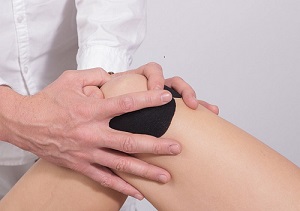Can Pelvic Inflammatory Disease Lead to Leg Pain?
Karen has been troubled by discomfort in her body recently. She initially thought it was just a common pelvic inflammatory disease (PID) that could be treated with medication. However, to her surprise, she started experiencing pain in her legs as well. This has left her deeply confused and anxious. Can PID cause leg pain? Many women may have had similar experiences and questions. So, what exactly is going on?

Can pelvic inflammatory disease cause leg pain?
When PID is more severe, it can potentially cause leg pain through several mechanisms:
1. Nerve Transmission: The pelvic area has abundant distribution of nerves interconnected with those in the lower limbs. Inflammation in the pelvis can stimulate pain signals that travel along nerve pathways to the legs, resulting in pain. This pain may manifest as soreness, throbbing, or stabbing sensations, varying in intensity and nature depending on individual differences and the severity of the condition.
2. Inflammatory Spread: If PID is not promptly and effectively treated, inflammation can spread to surrounding tissues and structures in the pelvic area, such as connective tissues and ligaments. These tissues are closely associated with nerves and blood vessels in the lower limbs. When inflammation affects these areas, it may impair normal leg function and lead to pain.
3. Blood Circulation Disorders: PID can cause congestion, dilation of blood vessels in the pelvic region, and even formation of blood clots, affecting pelvic blood circulation. Proper blood flow from the lower limbs passes through the pelvis. If there are circulation issues in the pelvis due to PID, it can lead to poor blood return from the legs, causing leg congestion, swelling, and subsequent pain.
However, it's important to note that while PID can potentially cause leg pain, not all individuals will experience this symptom. Additionally, leg pain may not always be attributed to PID. It could be due to other reasons, such as lumbar disc herniation, compressing nerves, leg muscle strains, or vascular diseases.
When leg pain occurs along with typical symptoms of pelvic inflammatory disease (PID), such as lower abdominal pain, lumbosacral soreness, increased vaginal discharge, and menstrual irregularities, prompt medical attention is recommended.
Doctors will conduct a thorough assessment including detailed medical history, physical examination, laboratory tests such as complete blood count, C-reactive protein, vaginal secretion smear, and culture, as well as imaging studies like ultrasound (B-mode) and CT scans, to comprehensively determine if the leg pain is related to PID.
For patients diagnosed with leg pain caused by pelvic inflammatory disease (PID), treatment typically includes anti-infective therapy, symptomatic relief, and physical therapy.
Regarding PID, antibiotic treatment is essential to combat the infection. To ensure effectiveness, Doctors select appropriate antibiotics based on the pathogen type and sensitivity testing results. Additionally, herbal medicine, such as the Fuyan Pill, which clears heat, detoxifies, promotes blood circulation, and removes blood stasis, can aid in resolving inflammation.
During treatment, if leg pain symptoms are severe, symptomatic relief measures like painkillers may be used to alleviate pain. Moreover, physical therapies such as heat application and infrared irradiation can help improve pelvic blood circulation, reduce inflammation, and relieve pain.
In addition to medical treatment, preventive measures are crucial for preventing exacerbation and recurrence of PID. These include maintaining personal hygiene, practicing safe sex, especially during menstruation, using sanitary products properly, and avoiding activities that could introduce bacteria into the pelvic area.
In summary, while PID can potentially cause leg pain under certain conditions, it is not always the definitive cause. If symptoms suggestive of PID, particularly with unusual manifestations like leg pain, arise, patients should not ignore them and seek timely medical attention for proper diagnosis and management.
Recommended Readings:
How to Prevent Recurrent Chronic Pelvic Inflammatory Disease: These 4 Methods are Key
Can Pelvic Inflammatory Disease Lead to Sexual Frigidity?
previous pageWhat is The Most Obvious Pain Location in Pelvic Inflammatory Disease?
next page- Severe Endometriosis Treatment: Chronic Pelvic Pain Relief and Infertility Solutions
- Managing Adenomyosis: Easing Pelvic Pain and Heavy Menstrual Bleeding with Natural Approaches
- Daily Care Tips for Pelvic Inflammatory Disease Caused by Ureaplasma Urealyticum
- Is Fallopian Tube Blockage Causing Your Lower Abdominal Pain?
- Don't Let Pelvic Pain Trouble You! Traditional Chinese Medicine and Dietary Therapy to the Rescue
Testimonials
- Adenomyosis with Ureaplasma Urealyticum Cured by Fuyan Pill
- Tubal blockage with hydrosalpinx can be cured by TCM shortly
- Fuyan Pill Helps A woman with Adenomyosis Get Pregnant
- A Woman with Hydrosalpinx Is Cured with Fuyan pill
- Pelvic Inflammatory Disease Testimonials
- Irregular Vaginal Bleeding and Endometrial Thickening Cured by Fuyan Pill
- Pruritus Vulvae and Frequent Urination: Mycoplasma Infection Cured after 2 Courses



